Plant Your Own Pollinator Paradise
Our 2021 Native Plant Sale is history. Thanks to everyone who visited our store. Your plants are bringing new life into your gardens and our community.
See you next year!
Welcome to our native plant sale. Check out the plants below and think about what you’d like in your garden. Then visit our shop and place your order. Simple!
Create a wildlife oasis in your yard! The Wild Ones Keweenaw chapter is holding its first sale of the summer. We are offering a selection of native plants to get you started gardening for butterflies, birds, and pollinators.
Love native plants? Want to take advantage of pre-sales and pay half price? Join the Wild Ones Keweenaw chapter! Sign up here!
How our sales work
Our plant sales are online. Here’s what to do:
- Browse our plant selection below. You can link to detailed plant information sheets for each offering.
- Starting on July 21 (July 17 for Keweenaw Wild Ones), go to our Shop and pick out your plants.
- Check out. You may use PayPal or “pay on delivery.”
- If you have trouble checking out, email your order to wildoneskeweenaw at gmail.com.
- Pick up your order, bringing cash or a check if you have not paid with PayPal. You will receive an email reminding you when and where.
WHEN: TBA
WHERE: 1284 Hickory Lane, Houghton
Questions? Email [email protected]
Love native plants? Want to take advantage of pre-sales and pay half price? Join the Wild Ones Keweenaw chapter! Sign up here!
Read about these fascinating plants, then visit our shop.
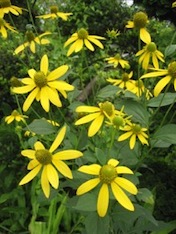
Golden Glow Rudbeckia laciniata
Found in damp, partly shady places in the wild, this eye-catching plant does fine in full sun with some moisture. The flowers, which look like shuttlecocks, float on the end of long, graceful stems. FYI, golden glow, aka green-headed coneflower, aka yellow coneflower, can grow to statuesque heights. It’s great for the back of the border or filling in a big spot with very little effort. It may droop in hot sun; don’t worry. It will pop right back up overnight.

Lance-leaf Coreopsis Coreopsis lanceolata
Lance-leaf coreopsis is the hands-down workhorse of the summer garden, throwing an exuberant display of flowers when it seems like every other plant has thrown in the towel. Dead-head to keep the show going on, and on, and on. As you would expect, lance-leaf coreopsis is not fussy. It just likes lots of sun and not too much water.
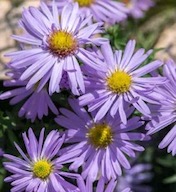
New England Aster Aster novae-angliae
Tons of gorgeous pink to purple blooms in the fall are a late-season godsend for butterflies and other pollinators. Good luck counting how many species you can find at one time nectaring on this aster. Can get tall and leggy, so if that bugs you, pinch back in early summer or put in the back of the border. Likes sun and partial shade and almost all soils, so long as they aren’t super dry.
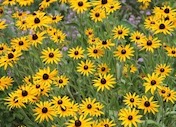
Black-Eyed Susan Rudbeckia hirtus
SOLD OUT
This beloved roadside wildflower tolerates nearly all sunny conditions. A biennial or short-lived perennial, it will return year after year if the seeds land in their happy place.
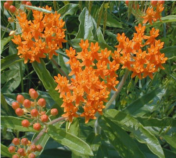
Butterflyweed Asclepias tuberosa
This dandy plant grows in miserable sandy soil in full sun; once established, it is hardy as stone. Beloved by pollinators and humans alike, its blooms are regularly bedecked by monarchs. Plant butterflyweed and help keep our favorite butterfly coming back year after year.
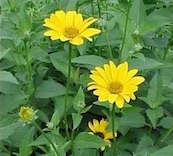
False Sunflower Heliopsis helianthoides
Easy to grow and very pretty, false sunflower loves sun and just about any soil or moisture condition, though it does appreciate a little extra dampness. It can form a focal point at the back of the garden and is beloved by pollinators and birds. Bonus! Beautiful sunflower-type flowers without sunflowers’ tendency to spread.
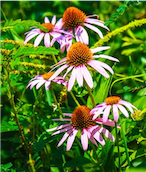
Purple Coneflower Echinacea purpurea
The gateway plant leading to a lifelong addiction to native gardening. With a handful of other natives (black-eyed Susan comes to mind), purple coneflower can lure even the most conventional gardener to consider transforming a corner of their yard into a wild paradise. It’s gorgeous, familiar, adaptable, and well-behaved. Not to mention easy to grow in average well-drained soil in full sun to partial shade.
And yes, even though purple coneflower looks like it could have leapt off the pages of a conventional seed catalog, it is definitely loved by birds and pollinators—not just us humans.
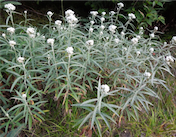
Pearly Everlasting Anaphalis margaritacea
This underused plant thrives in sun and sandy soil with a bit of moisture. It’s a great filler, and the blossoms are charming. It is a host plant for caterpillars of the American lady butterfly, but it can handle being munched on once it is established. These two species have known each other for a long time.
